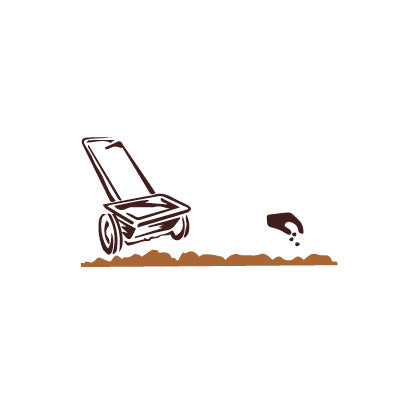Planting a wildflower meadow is a relatively simple task, as many experienced gardeners know. Still, the more time you are willing to give your project and allow for proper preparation, the more successful and beautiful your meadow will be.
The following steps will help you establish an impressive and inspirational wildflower meadow for years to come.

STEP 1 - CHOOSE YOUR SEASON
SPRING PLANTING: Spring planting is best done a month or so after the final frost of winter. Naturally, the exact date will vary from region to region so it is important not to "jump the gun" and plant too early. If seeds are in the ground when a late season frost hits, they will be lost for the season and will need to be reseeded.
SUMMER PLANTING: Summer planting should only be done in cooler areas where the temperature doesn't stay above 80 degrees for long periods of time.
FALL PLANTING: Fall is the preferred time of year for many seasoned wildflower gardeners. Though it seems unusual, the main benefit is getting a jump-start for spring blooms. The trick to planting in the fall is to do so after the first killing frost of the season when the ground is almost frozen to prevent any early germination.

STEP 2 - CHOOSE YOUR SITE
SUNLIGHT: Though many wildflowers can tolerate filtered shade, the optimum area to plant is in full sun. Plant your meadow away from too many trees, houses, garages, barns, etc. that will block sunlight reaching the flowers.
SOIL QUALITY: Wildflowers will generally sprout in all but the most difficult conditions. This means that pampering your site with fertilizer or rich sod is not usually necessary. In fact, doing so can sometimes achieve the opposite result by inviting unwanted weeds and grasses. Only in the poorest of conditions, where the soil is literally sterile, is using an accelerant advisable.
WATER ACCESSIBILITY: The availability of a steady watering source is helpful, but not usually necessary. In most regions and during most seasons, natural rainfall will be sufficient to provide the water necessary for a successful bloom. However, if you live in a particularly arid region, are planting during drier months, or are simply experiencing prolonged drought, it will definitely be to your advantage to water your site every other day or so for the first few weeks after planting until root growth is established.

STEP 3 - DETERMINE COVERAGE & PREPARE THE SOIL
DETERMINE COVERATE: We generally recommend one standard seeding rate for all wildflower mixtures (see below).
PREPARE THE SOIL: Preparing the soil is a vital step for any wildflower seed project. Though tempting, simply casting your seeds in the air hoping for sprouts is a waste of time and money if the soil is unprepared. These seeds are tenacious by nature and will persever under poor conditions, however, they will perform best when weeds and grasses are removed. For smaller sites, a rake, hoe, or shovel is often sufficient to do the trick of removing unwanted grass, weeds, etc. For larger sites, a roto-tiller is often the preferred method. Regardless of what tool or machine is used, the important thing to remember is that the more growth that's removed, and the more loosened the soil, the better the environment for which your seeds to ultimately thrive. Keep in mind that, after all, these are “wild” flowers, not roses, so naturally there will be some competition from weeds and grasses.
Wildflower Coverage Chart
| Amount | Recommended Coverage | For the Geometrically Challenged |
|---|---|---|
| 1/4 Pound | 250 - 500 Sq. Ft. | A Living Room |
| 1 Pound | 500 - 1,000 Sq. Ft. | A Surburban Front Yard |
| 5 Pounds | 5,000 - 10,000 Sq. Ft | Up to about 1/4 Acre |
| 10 Pounds | 10,000 - 20,000 Sq. Ft | Up to about 1/2 Acre |
| 25 Pounds | 25,000 - 50,000 Sq. Ft | An Ample Coverage of 1 Acre |
| 50 Pounds | 50,000 - 100,000 Sq. Ft | An Ample Coverage of 2 Acres |

STEP 4 - SOW THE SEED
So now you’ve got some sweat on your brow and you’re ready to plant! There are many effective installation techniques, but again, the size of the project will probably determine which makes the most sense for you. The two methods that are probably most advisable for the home-owner are:
The Hand-Broadcast Method: Useful for smaller jobs. Simply scattering the seed evenly over the site by hand.
The Rotary or “Cyclone” Seeder: Used for larger jobs. This method accomplishes the same results through the use a hand-cranked spreader that can be purchased relatively cheaply at any garden center.

